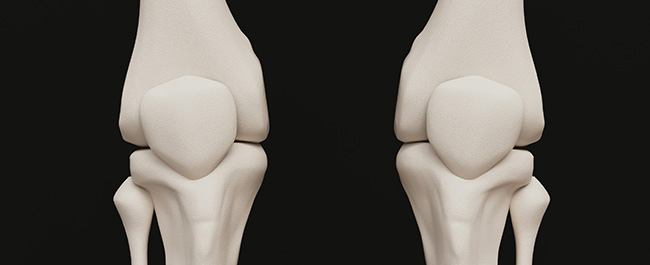Discoveries lead to better and safer hip and knee replacements

Research profoundly changes the practice of joint replacement globally.
Research highlights
- Major changes to joint replacement practice.
- Massive potential cost savings for healthcare providers.
- Significantly improved outcomes for patients at risk of mortality and long term pain.
Musculoskeletal conditions that lead to hip and knee replacements are a major cause of global disability. They also have a huge financial impact on healthcare services. Over 200,000 hip and knee replacements take place in England and Wales annually at a cost of over £1bn.
Around 10% of joint replacements also need complex revision surgery to compensate for replace failed implants. One in five patients experience long-term pain, and the procedure carries a risk of cancer.
Over the last decade, University of Bristol research has helped to address these challenges and change the practice of joint replacement and around the world – leading to a big reduction in the need for revision surgery, decreased risk of mortality and improved patient outcomes.
Ground breaking research
The Bristol team used a combination of research methods including trials and statistical analysis that it carried out for the National Joint Registry (NJR) for England and Wales. They also created new methods for monitoring surgeon and implant performance to help develop ongoing improvement in the delivery of care.
Key breakthroughs included research that showed catastrophically high failure rates in stemmed metal-on-metal hip replacements and hip resurfacing in women.
Further research found that metal-on-metal hip replacement was responsible for over 8,000 excess revision procedures at a cost of over £100 million in England and Wales alone. This equated to over 110,000 avoidable revisions worldwide.
In parallel, the research team used network meta-analysis and health economic modelling to show that the most clinically and cost-effective implants for hip replacement are fixed with cement and use small diameter heads.
They found that using these implants for all patients could save up to £281 million in England and Wales in the next decade.
The research also revealed that partial knee replacements carry a lower risk of cancer than total knee replacement – and that co-interventions with chemical and mechanical thromboprophylaxis, spinal anaesthetic and the posterior surgical approach for the hip all reduce post-operative risk.
Further discoveries included the effectiveness and cost-effectiveness of injecting local anaesthetic around the surgical site to reduce long-term pain after hip replacement.
Global impact
As a result of the Bristol research, healthcare services in Australia, Canada and the UK ended metal-on-metal hip replacements in almost all cases by 2018.
In the US, The Food and Drugs Administration (FDA) now approves no stemmed metal-on-metal hip replacement systems and only two resurfacing systems for marketing.
The New Zealand Medicines and Medical Devices Safety Authority, and the European Commission Scientific Committee on Emerging and Newly Identified Health Risks, have also issued guidance citing Bristol’s research (including research on the risk of developing cancer) in their recommendations.
In addition, the research on methods that increase the risk of mortality around the time of surgery and reduce long term pain for patients have also been widely adopted into clinical practice in the UK – resulting in decreased 90-day mortality rates (7% for hip replacement, and 10% for knee replacement) and more rapid recovery for patients.
As a result of the Bristol research, healthcare services in Australia, Canada and the UK ended metal-on-metal hip replacements in almost all cases by 2018.
Connect with the researcher
Professor Michael Whitehouse, Professor of Trauma and Orthopaedics, Bristol Medical School
Cite the research
Evans JT, Walker RW, Evans JP, Blom AW, Sayers A, Whitehouse MR. How long does a knee replacement last? A systematic review and meta-analysis of case series and national registry reports with more than 15 years of follow-up. Lancet. 2019; 393(10172): 655-663.